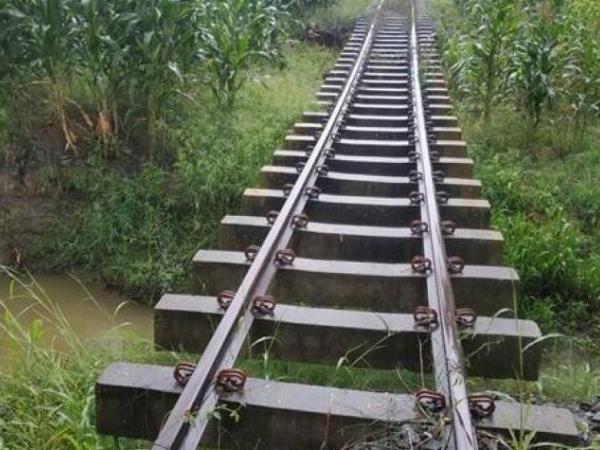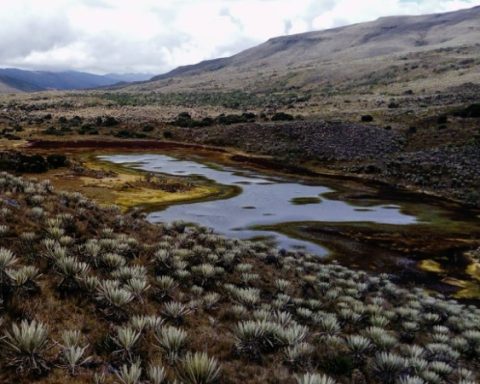Colombia has made progress in terms of transportation through the National Infrastructure Agency (ANI) with the figures of Private initiative and Public Private Partnershipwhich will be joined by the Alliances Public Popular. With these, the Government has drawn up an ambitious roadmap to bet on large infrastructure projects in the country, to generate the long-awaited intermodality in transport.
For this the president Gustavo Petro recently announced the increase in the profile of future validity that goes from 0.6% to 0.8% of GDP for infrastructure projects, as defined in Minister council.
(How is the construction of the futuristic megacity in Arabia going?).
This is how the ANI presented the portfolio of megaprojects rail, road, fluvial and airportwhich are intended to be structured and tendered during the four-year period.
One of the Government’s commitments focuses on the reactivation of the railway network and for this it is already advancing the structuring and/or bidding of the projects of Public-Private Association of La Dorada – Chiriguanáwhich will cost $1.6 billion and will go through more than 20 municipalities in the country; Bogota–Belencitoin which it is expected to invest $7.5 billion, to have a 257-kilometer railway corridor that allows the mobilization of cargo and the Pacific Train in which it is expected to invest more than $6 billion.
(Bogotá Metro: ex-magistrate warns that the design could not be changed).
In addition, prepare the project Buenaventura-central railway networkwhich is projected at $19 billion.
In this way, the Government proposes a great commitment to this mode of transport, since more than $34.1 billion would be allocated to the railway network in four years. Another of the challenges that the Executive has in the four-year period is to develop highway infrastructure megaprojects that improve competitiveness and productivity indicators.
Among them, the structuring of the dual carriageway stands out Pasto–Popayán which would cost $12.6 trillionof which the ANI will give $7.4 trillion; Villeta – Guaduas what will it cost $6.3 trillion; Zipaquira to Barbosaand the road connection of Sogamoso – Aguazul – Peanut – Puerto Gaitánwhich will bring the departments of Casanare, Goal and boyacáwhich will be tendered in the coming months.
(The supply of social housing would fall due to a new adjustment of rules).
The airports are also part of the package of initiatives that the Government hopes to grant concessions, for which it defined more than $12 billion to invest in the airports of Neiva, Cali (0.8 trillion), good luck, Cartagena ($0.49 billion), Saint Andrew ($0.3 billion) and Bogota in the airfield ($0.69 billion) and in El Dorado Max ($6.9 billion). The figures only contemplate the investment value for construction, and the projects will be carried out under the Private Initiative scheme. In addition, other destinations such as La Guajira and departments like Guaviare, Goal and amazon they are in the sight, not only to improve the connectivity of the regions with the center of the country, but also as a pillar to promote foreign tourism in Colombia.
Also, the Transport Minister Guillermo Reyes assured that work will be done on airport infrastructure in tolu and covenas, riohacha and potentiate the largest ones so that they can meet the demand.
(Of more than 15 recovery works in Bogotá, they have only delivered one).
“Tourism and road, air, maritime and railway infrastructure have to go hand in hand. The sector cannot go to sell a grand tourism if it does not have airports, if it does not have terminals, if it does not have adequate roads so that foreigners can discover the riches that we havethe official said.
On the fluvial issue, the ANI projects the navigability of rivers Goal and I attract (project that is currently being structured), as well as the adaptation, improvement and maintenance of the port of tumaco (Narino).
“Likewise, from the ANI we are preparing to start with the pre-construction phase of the Canal del Dique, which was tendered for $3.2 billion pesos, the most important investment in the fluvial mode in Colombia.”, maintains the governing body of the sector.
Building these megaprojects is part of the Government’s plan to promote intermodality and the need to reconfigure the logistics chain, seeking to reduce transportation costs, generate optimal conditions for the implementation of the operation, and increase the levels of competitiveness in the country.
BRIEFCASE














